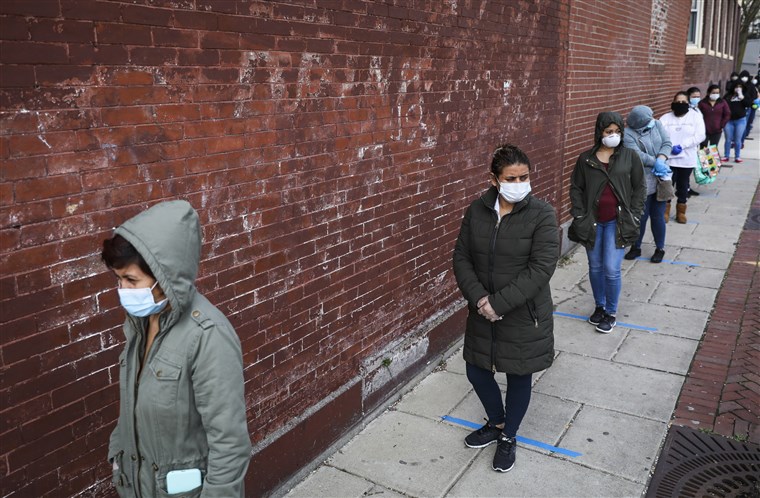The initial coronavirus relief efforts provided cash payments to households in the form of (1) a flat grant of $1,200 per adult and $500 per child to families with income below a certain level and (2) an increase in the coverage, duration, and benefit level of unemployment insurance. In the below graph, I sum up the aggregate payments from these efforts using the BEA personal income data.
In the twelve months prior to the pandemic, total spending on unemployment benefits averaged $2.3 billion per month. Since March, the average has been $61.9 billion per month, with $16 billion coming from the fact that tens of millions of people became eligible for regular unemployment benefits (red in the graph) and $43.6 billion coming from pandemic-specific expansions to the generosity of the UI program (black in the graph). Total unemployment spending beyond the usual amount was $476.5 billion over this eight month period.
In addition to the unemployment spending, the Economic Impact Payments (EIP) of $1,200 per adult and $500 per child totaled to $274.6 billion.
Thus the total amount of cash pandemic payments provided to households was $751.1 billion as of October this year. This is equal to $2,263 per person or $9,051 per family of four.
To determine whether this was an adequate response, we need to first define what the goals of such a response should be. In my view, in a pandemic situation where we are not trying to grow the economy or increase employment, the purpose of payments like these should be to replace the earnings of idled workers and to prevent destitution.
The response did a decent job of achieving these purposes while the programs lasted. The increase in unemployment benefits was equal to $600 per week, meaning that the government was, for a while, paying every unemployed person the equivalent of a $15/hour wage in addition to their regular unemployment benefits. The result of this was that 69 percent of laid off workers were receiving more on unemployment benefits than they used to receive when they were working.
As far as destitution goes, the combination of the UI expansion and the Economic Impact Payments drove the poverty rate down to the lowest level on record, which was quite remarkable given that there was also mass unemployment at the time.
A combination of general Republican opposition to these kinds of programs and the specific electoral strategies pursued by Democratic leaders resulted in these programs mostly running out of steam around September. At that point, the unemployment benefit bonus fell to $0 and poverty spiked in the country. The lapsing of these benefits was cushioned somewhat by the fact that households saved around $1.3 trillion extra dollars between March and September of this year, money that they could spend down if needed. But not all households were able to save and so destitution and income collapse became a serious problem for some.
In the final analysis, I think we can say pretty confidently that, as far as cash income goes, the pandemic response was pretty good for the period of time that it intended to cover. To the extent that there were problems with it, they were mostly longstanding failures in our system of benefit administration, things that could not be fixed in a pinch.
As far as political messaging on all of this goes, there is of course some wisdom in pointing out that it could have and should have been higher. But we should also consider the possible benefits of celebrating the superdole as a model that we should be aiming to implement on a more permanent basis. Tens of millions of people (many for the first time in their lives) just experienced what it is like for the government to do something to make their lives better in a real and significant way. Those experiences could provide a basis of support for a more general and more permanent expansion of the welfare state.

